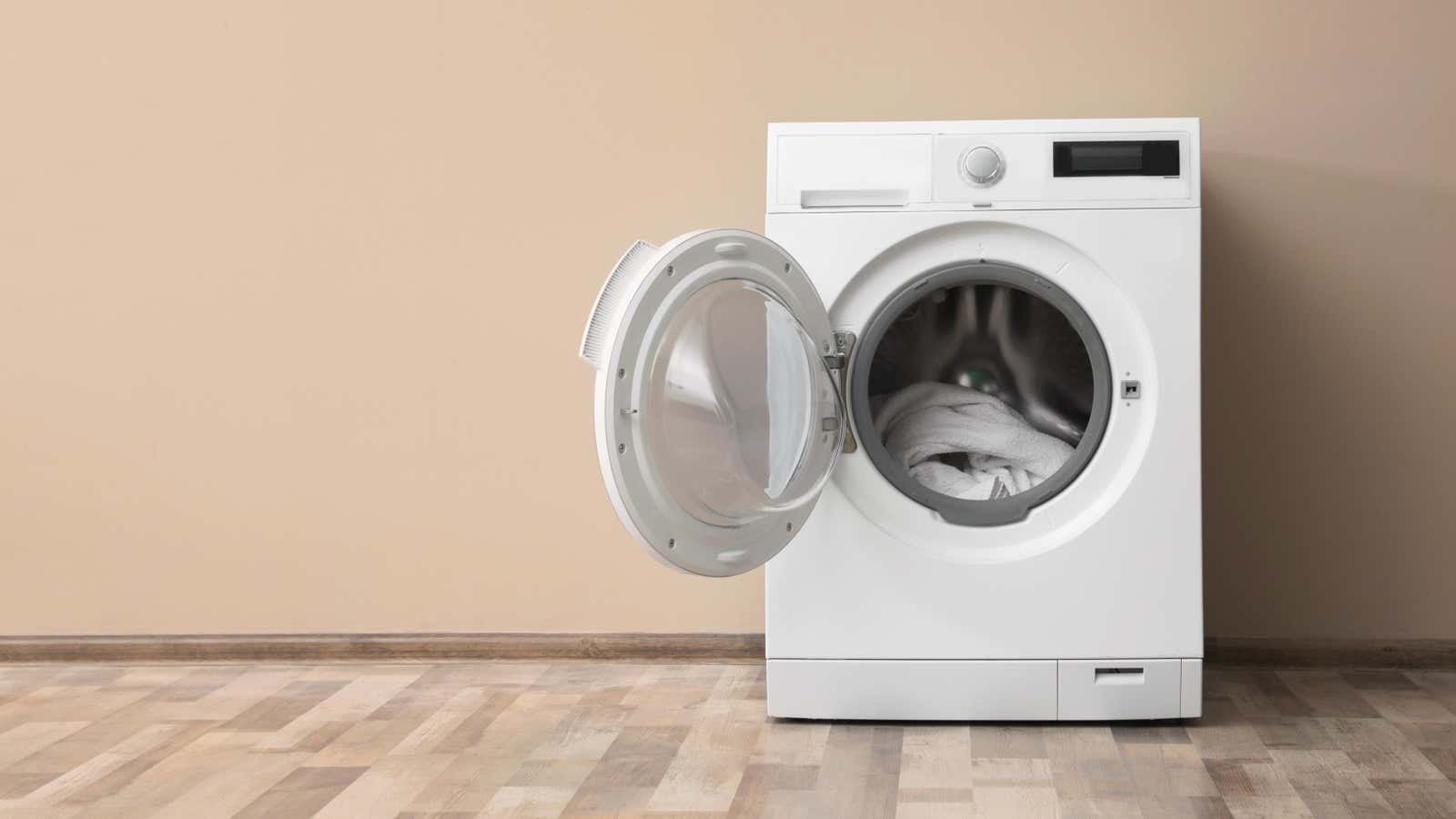How to Kill Mold in a Washing Machine

Have you ever opened a washing machine only to be confronted with a foul, stinky smell? Did you shrug your shoulders and ignore it? Me too. But it got worse, didn’t it? Until, in the end, your freshly laundered clothes don’t smell like mildew. We both had mold and bacteria growing in our washing machines and contaminating our linen. Luckily, cleaning your washing machine and preventing mold from reappearing is fairly easy.
Why does black mold grow in the washing machine?
Mold loves moisture, and some parts of your washing machine—gaskets, seals, hoses, dispensers, etc.—get wet and never completely dry. Mold also feeds on fabric softener residue and detergent left after washing clothes.
Although mold can grow in any washing machine, front-loading and “high-efficiency” washing machines in damp areas are more prone to mold than top-loading washing machines. When you close the HE machine door, it seals, preventing air circulation and mold growth. But an even bigger problem can arise from the rubber seals that keep everything in the HE washing machine airtight. Mold builds up under them if you don’t clean and dry them thoroughly.
Is mold dangerous in a washing machine?
In a word, yes. “Mold that grows in washing machines can be a problem even when the machine is not in use,” Melanie Carver, spokeswoman for the Asthma and Allergy Foundation of America, told Consumer Reports . “Mold can cause allergic symptoms, including sneezing, itching, runny and stuffy noses, and can also irritate the respiratory tract.”
Luckily, there are simple ways to clean your washing machine of mold and prevent it from reappearing.
How to clean mold from washing machine
To clean mold from your washing machine, first collect the following materials:
- Bucket
- Rubber gloves
- An old towel or rag that you no longer need.
- Brush
- Mold Killing Solution
Prepare a solution to kill mold
There are commercial products designed to kill mold, but there are many things you probably already have that you can mix with water to kill mold, such as chlorine bleach. To prepare a bleach-based mold killer solution:
- Mix 1 part bleach with 4 parts water.
If you don’t want to use bleach, you can try these alternative recipes :
- 2 cups water, ½ cup hydrogen peroxide, and ¼ cup lemon juice.
- 2 cups water, ¼ cup lemon juice, and ½ cup distilled white vinegar.
- 1 part vinegar to 4 parts water (I haven’t found vinegar-based cleaners to be particularly effective, but your results may vary).
Important : Do not mix bleach with any other ingredients as this can create a lethal gas.
Step 1: Clean the pipes of the washing machine
Mold can build up in your machine’s pipes and tubes, so we’ll take care of that first by following these steps:
- Empty the washing machine and check that there are no detergent or fabric softener residues in the dispensers.
- Pour about a cup of chlorine bleach into the main drum of your washing machine or…
- If you have detergent, softener and/or bleach dispensers, pour a reasonable amount of bleach into each, depending on the size of your machine.
- Run an empty washing machine on a cycle with the hottest water and maximum load.
- Leave the door open to dry completely.
Step 2: Clean the inside of your car
- If you have a front loader, make sure you peel back the seal and use a cloth or brush to thoroughly clean the rubber seal.
- Wipe down the drum, lid, and all exposed parts with a mildew killer solution and a towel, making sure you are wearing gloves.
- Wipe it off with a dry cloth and leave it open.
- If you want to go even further, you can take the entire drum out of the machine and wipe everything down. Check with the manufacturer if this is possible/recommended for your particular washing machine.
Step 3: Clean the lint trap and dispensers
Many washing machines have removable detergent and fabric softener dispensers.
- Refer to the manual for instructions on how to remove them.
- Soak them for an hour or so in hot tap water.
- If you cannot remove the drawers, clean them by wiping them with a brush or cloth soaked in the solution.
- Dry everything thoroughly before putting it back in place.
Most washing machines have a filter or lint trap and this is often a strong mold attractor. Refer to our guide to find out how to remove it. When you have:
- Clear the trap of accumulated dirt.
- Rub it with a mildew-killing solution or soak it in hot water.
- Run a wash cycle without detergent or bleach to make sure everything is completely rinsed out.
How to prevent mold in the washing machine?
Now that your washing machine is mold-free, there are some steps you can take to prevent mold from growing again (or at least slow its growth).
- Always leave the washing machine open between uses.
- Leave dispensers open if you can.
- Do not leave wet clothes in the washing machine.
- If you have a high efficiency washing machine, use only detergent designed for HE machines.
- Again, for HE washing machines, make sure you dry the area under the door gasket after every use.
- Improve air circulation in the laundry room with a fan or an open window.
- Turn on the dehumidifier to remove moisture from the air.
- Avoid using too much detergent.
- Some people recommend ditching fabric softener altogether and using white vinegar instead.